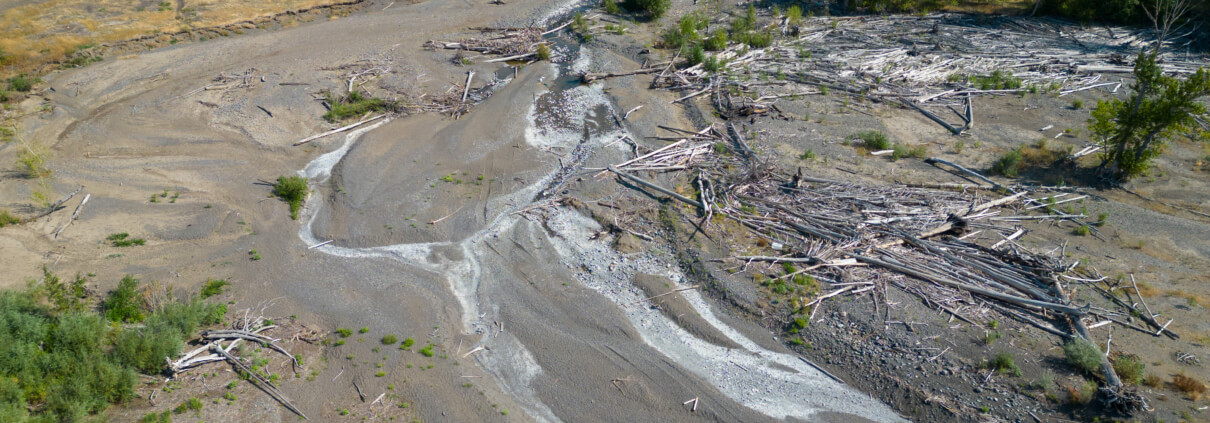As B.C. enters another drought season, how will salmon fare?
Extreme drought conditions have impacted watersheds in British Columbia for several years, and 2025 is no exception. Emergency fish salvage and monitoring efforts are underway due to exceptionally warm and dry weather this year that has led to low flows and warm waters, causing life-threatening challenges for salmon.
The Pacific Salmon Foundation (PSF), along with partners, is leading a coordinated, province-wide response to drought-related threats to salmon migration and survival.
“We’re already seeing very severe drought circumstances well beyond the normal range for this time of year, especially on the south coast,” says Jason Hwang, Chief Programs Officer and Vice President at the Pacific Salmon Foundation. “With partners, we are closely monitoring streams and creeks for fish passage blockages or other drought-related problems that may require intervention to help salmon survive.”
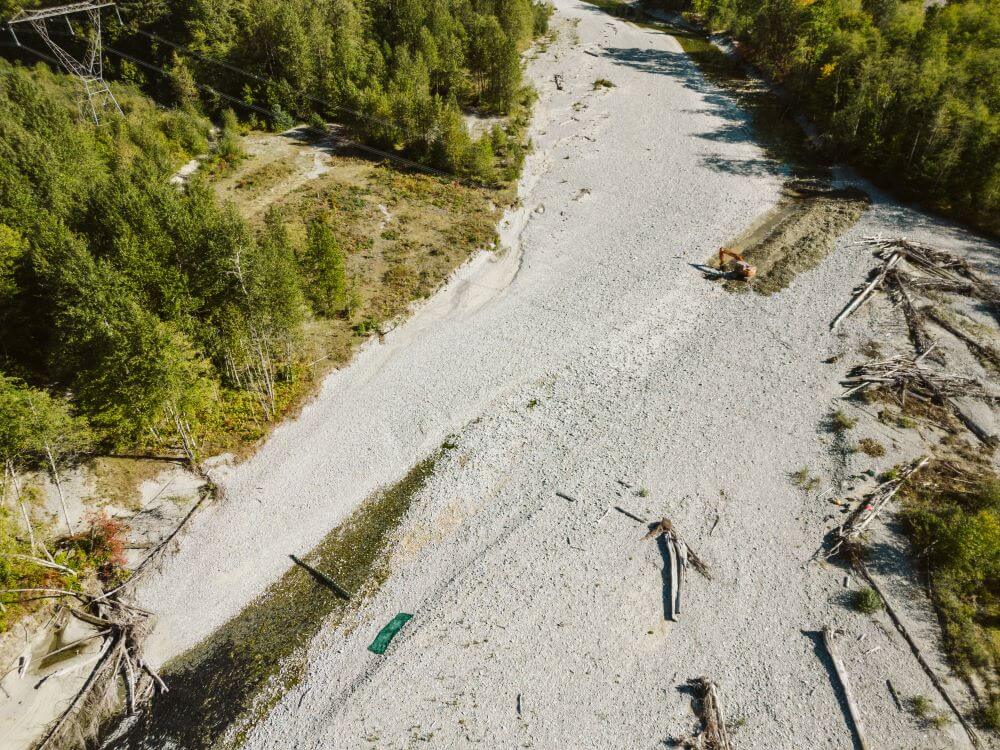
In 2023, drought conditions led to disconnected flows at Indian River, where emergency response efforts were initiated to help more than 18,000 stranded salmon pass the barrier. Photo: Brandon Deepwell
While recent rains have provided temporary relief in some areas, long-term drought conditions continue to escalate in coastal B.C.
Many stream flows are alarmingly low this year, with record low water levels in the Similkameen River in the Thompson-Okanagan region, and flows low enough to warrant concerns for aquatic habitat on the south coast and Vancouver Island.
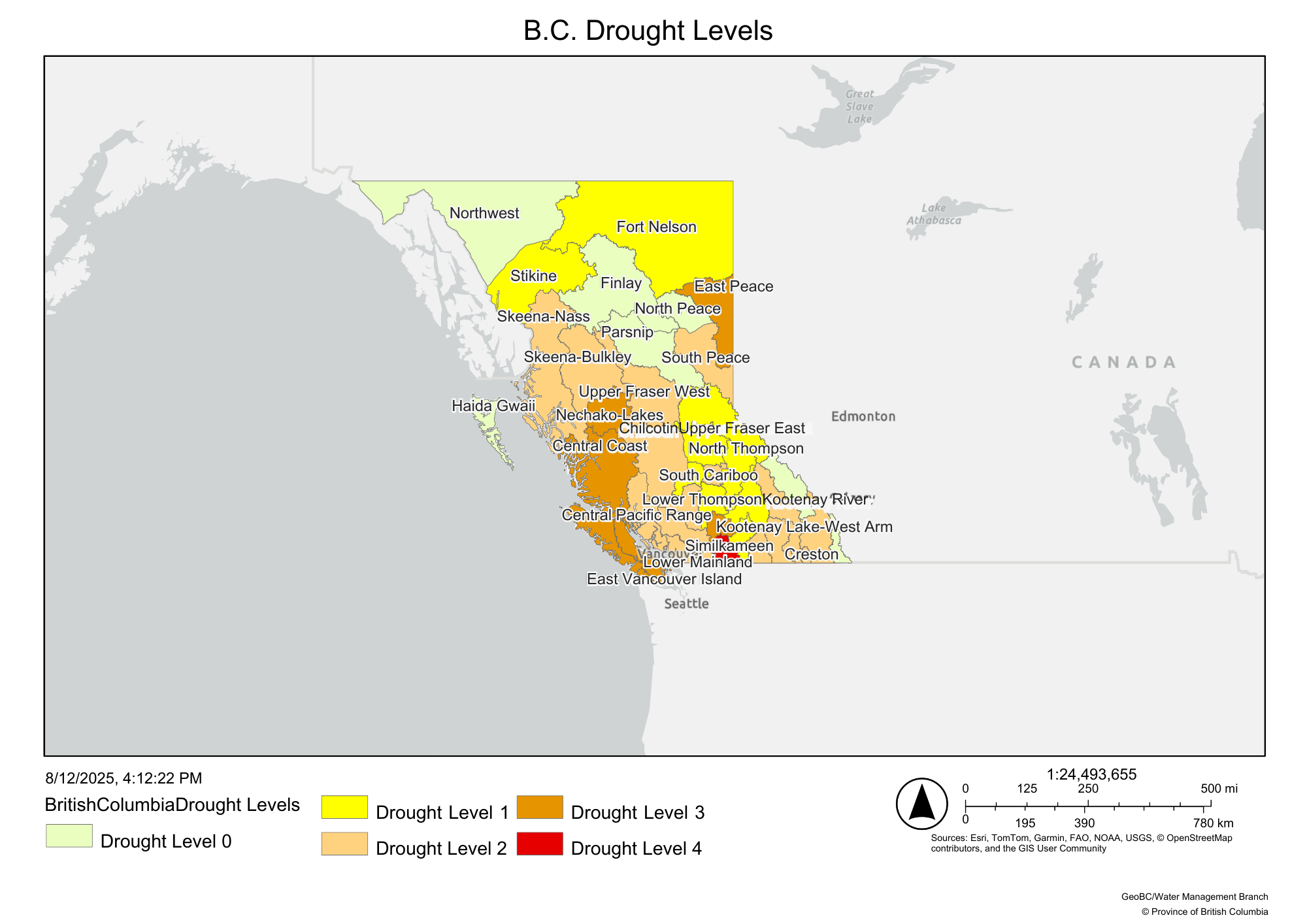
B.C. drought conditions as of August 5, 2025. Source: B.C. Drought Information Portal
Already, on-the-ground fish rescue efforts have been initiated in Hyde Creek (Port Coquitlam), Little Campbell River (Boundary Bay), Simms Creek (Campbell River), and Perseverance Creek (Cumberland) to relocate stranded juvenile salmon from isolated pools and return them to viable habitat with sufficient water levels.
In July, the Cowichan Watershed Board warned that the Cowichan River on eastern Vancouver Island may be susceptible to a massive fish die-off this year, only two years after more than 100,000 salmon and trout were discovered dead in the river. Officials worry as monitoring indicates that current low river flows, warming water temperatures, and declining water quality are reminiscent of conditions in 2023.
From reactive to proactive
The Cowichan has adopted a long-term approach for drought response.
With a $90,000 PSF grant from 2024, the Cowichan Watershed Board developed a long-term drought and fish kill prevention plan, which is now being applied to track and better understand the threats to fish, and coordinate actions to address drought and water quality impacts.
This year, the Cowichan Watershed Board has convened a weekly Water Quality technical committee made up of local rightsholders and stakeholders to coordinate the implementation of a series of actions to mitigate the consequences for fish and other aquatic wildlife, including reducing wastewater effluent inputs into the river, conserving lake water with weir releases, implementing early fishing closures, and identifying ‘cold water refuges’ – naturally-occurring cool spots that provide fish relief from warm waters, which can be lethal for salmon.
The Cowichan isn’t alone in embracing this proactive approach to drought planning for fish and habitat.
PSF’s Climate Emergency Fund – which helps salmon endure climate emergencies like drought, fire, and flood, and natural hazards like landslides – has approved $543,125 in 2025 so far to 12 projects, many of which focus on strategic mitigation of drought issues.
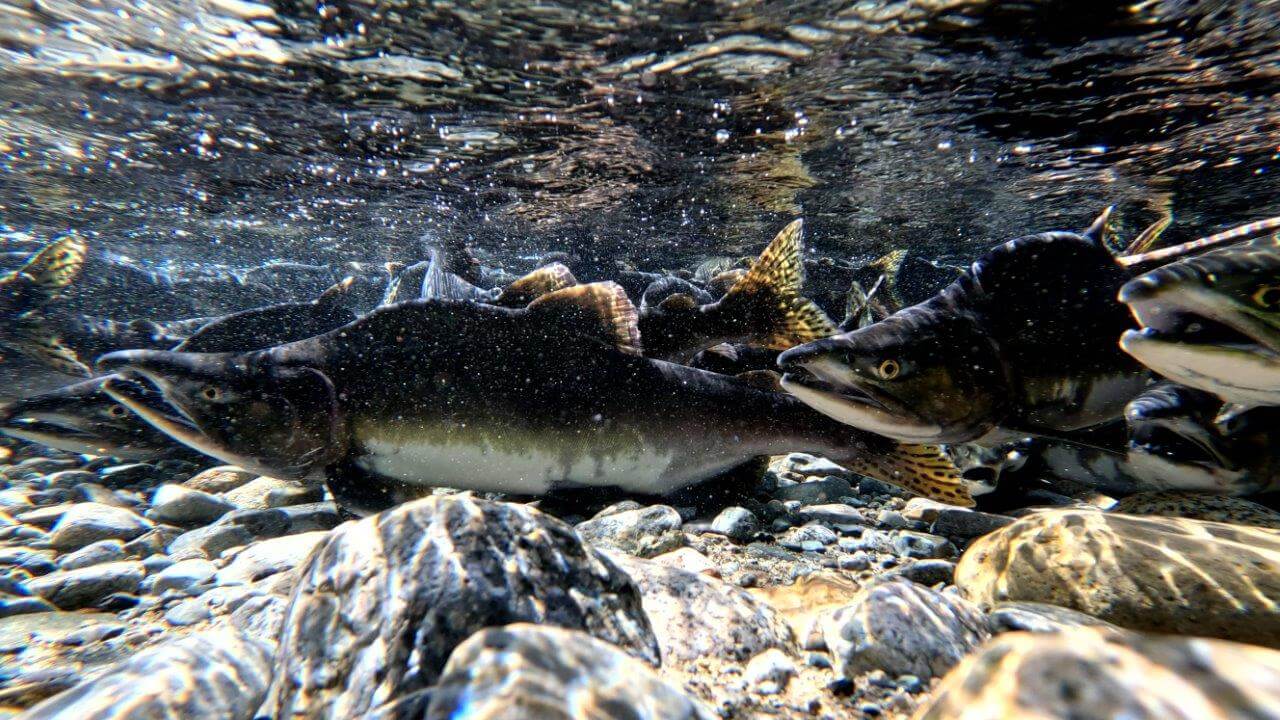
For example, the Somass Flows Committee is convening First Nations, government agencies, and industry to help guide water management decisions for the Somass River on the west coast of Vancouver Island, which has been susceptible to low flows in recent years.
And in the Coldwater River near Merritt, which is already seeing drought impacts this year with fish salvage efforts in place to relocate juvenile coho salmon, PSF is helping Raincoast Conservation Foundation and Scw’exmx Tribal Council conduct drone and survey snorkels to map ‘thermal refuge’ habitat, helping conserve areas needed for salmon to survive warming waters and climate change.
“Summer drought is becoming the new normal for British Columbia. We can help give salmon the best chance at adapting to warmer, drier conditions by planning ahead with a proactive, long-term, and collaborative approach,” says Hwang.
Drought resources
PSF works with the First Nations Fisheries Council of B.C., Fisheries and Oceans Canada, and the Province of B.C. to help local groups, including First Nations, streamkeepers, and conservation organizations, plan for long-term drought mitigation and respond to in-season drought impacts on salmon. When urgent issues arise, the group provides funding for rapid response projects, such as rescuing stranded fish, restoring fish passage, coordinating monitoring, and piloting the use of new tools to reduce drought impacts.
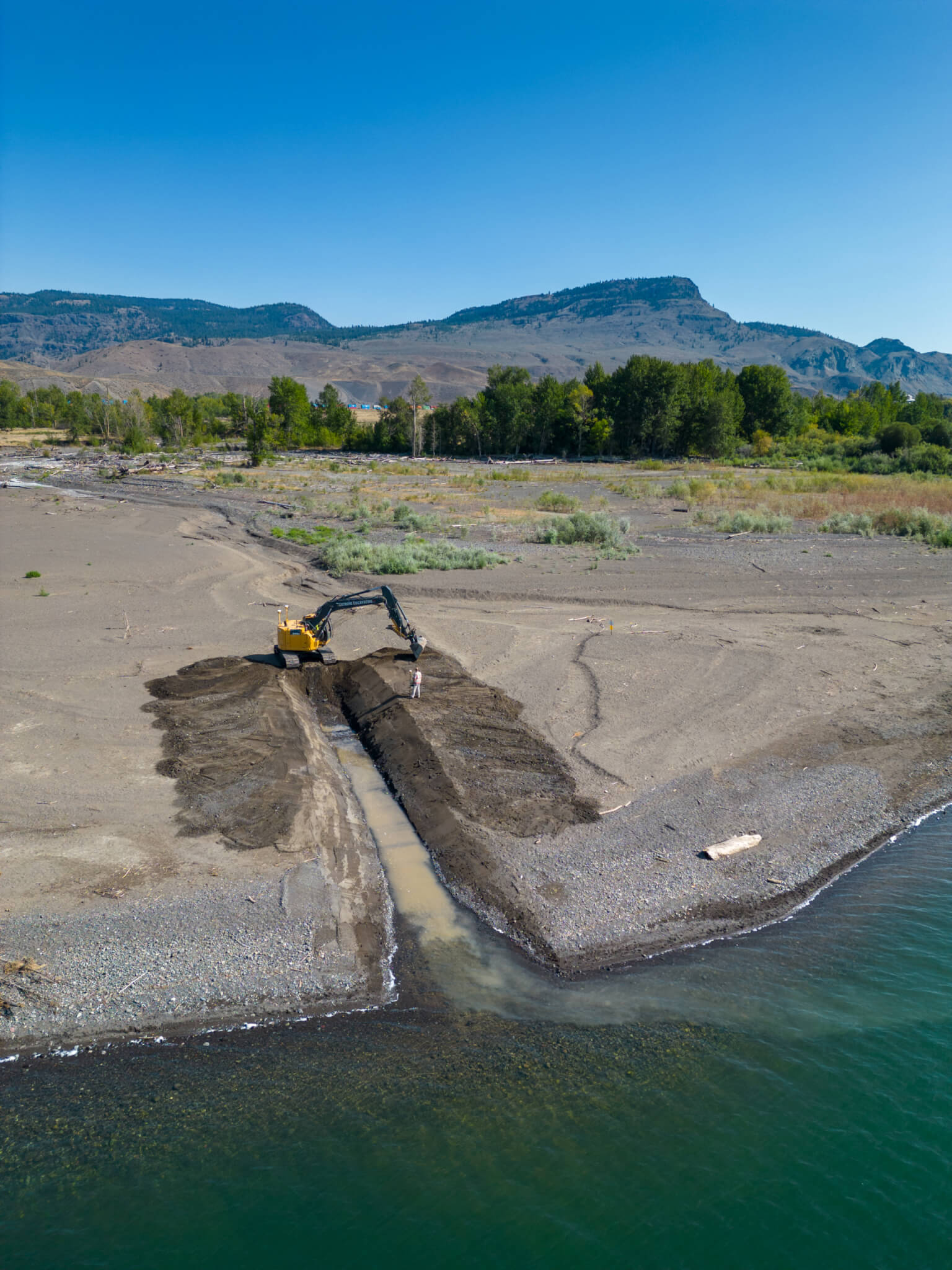
Restoring water flows near Kamloops in 2023 to improve salmon passage. Photo: Peter Olsen
Since 2023, PSF’s Climate Emergency Fund has provided more than $1.3 million to help salmon overcome to climate impacts across the province.
Funding requests can be submitted to emergencyresponse@psf.ca.
PSF is also crowdsourcing on-the-ground data by encouraging individuals to use the PSF Drought Reporting Tool. If you see drought conditions in a river or stream that are impacting salmon habitat or might be impeding salmon migration, please submit the incident to the reporting tool.
Reports received through the Drought Reporting Tool will improve our collective knowledge of climate change with more eyes on the ground, and will be shared with partners and technical experts who will help determine a course of action on a case-by-case basis.
